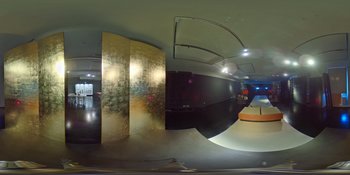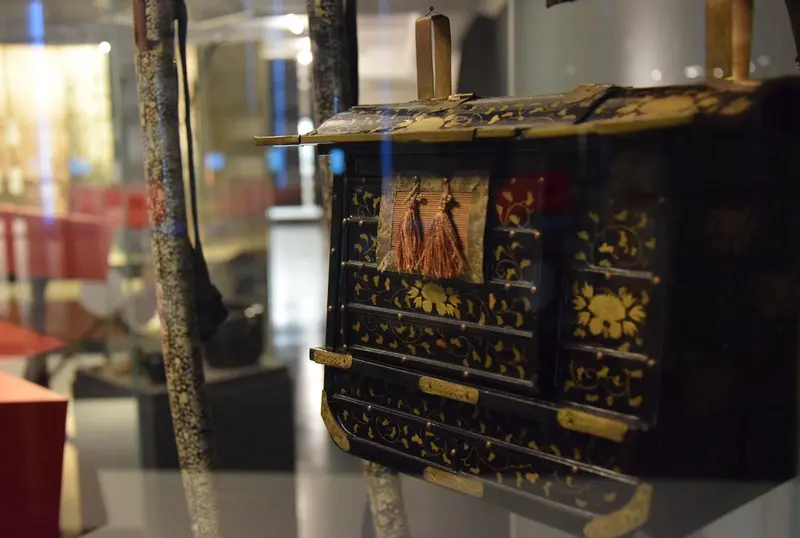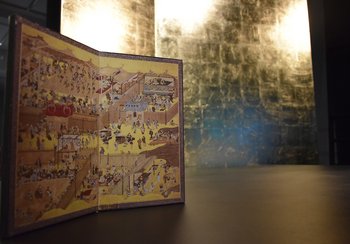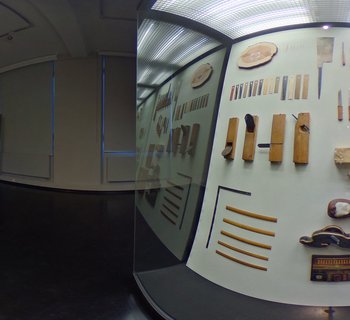[Translate to English:] bild 2
Model of a sedan chair (kago), 1600-1875, wood, black lacquer, sprinkled gold, metal fittings, textile, acquired 1875 from the collector Carl Pieschel, Dresden Museum of Ethnology, Dresden, Inv. No. 20856
The byōbu realistically depicts life in 17th century Japan on Kyoto’s Shijō street. In the strictly hierarchically structured society of the Edo period (1603-1868), the happy coexistence of different social classes was only possible in the entertainment districts.
Both samurai and rich merchants can be seen strolling the streets. Wealthy ladies are carried in palanquins, and merchants hurry past with their goods attached to carrying poles. Some noblemen disguise themselves with a traditional braided hat made of rushes to take part in the hustle and bustle without being recognized.

There is also no deliberate separation in the audience. Despite separate seating areas, simple monks can be found next to fashionably dressed women, porters next to noblemen with swords. People sit together while eating, drinking, chatting, smoking, and looking on in wonder.
Several of the objects depicted are presented exemplarily in thematic showcases. They invite us to immerse ourselves in the scenes from life depicted on the byōbu.
Model of a sedan chair (kago), 1600-1875, wood, black lacquer, sprinkled gold, metal fittings, textile, acquired 1875 from the collector Carl Pieschel, Dresden Museum of Ethnology, Dresden, Inv. No. 20856

Byōbu are multi-sectional screens that have been in use in Japan since the 8th century. They were used for courtly ceremonies, as decoration on official occasions, and as room dividers by the Japanese upper class. During the Edo period (1603–1868), with the growing prosperity of the urban population, byōbu also found their way into townhouses and the establishments of the entertainment districts.

